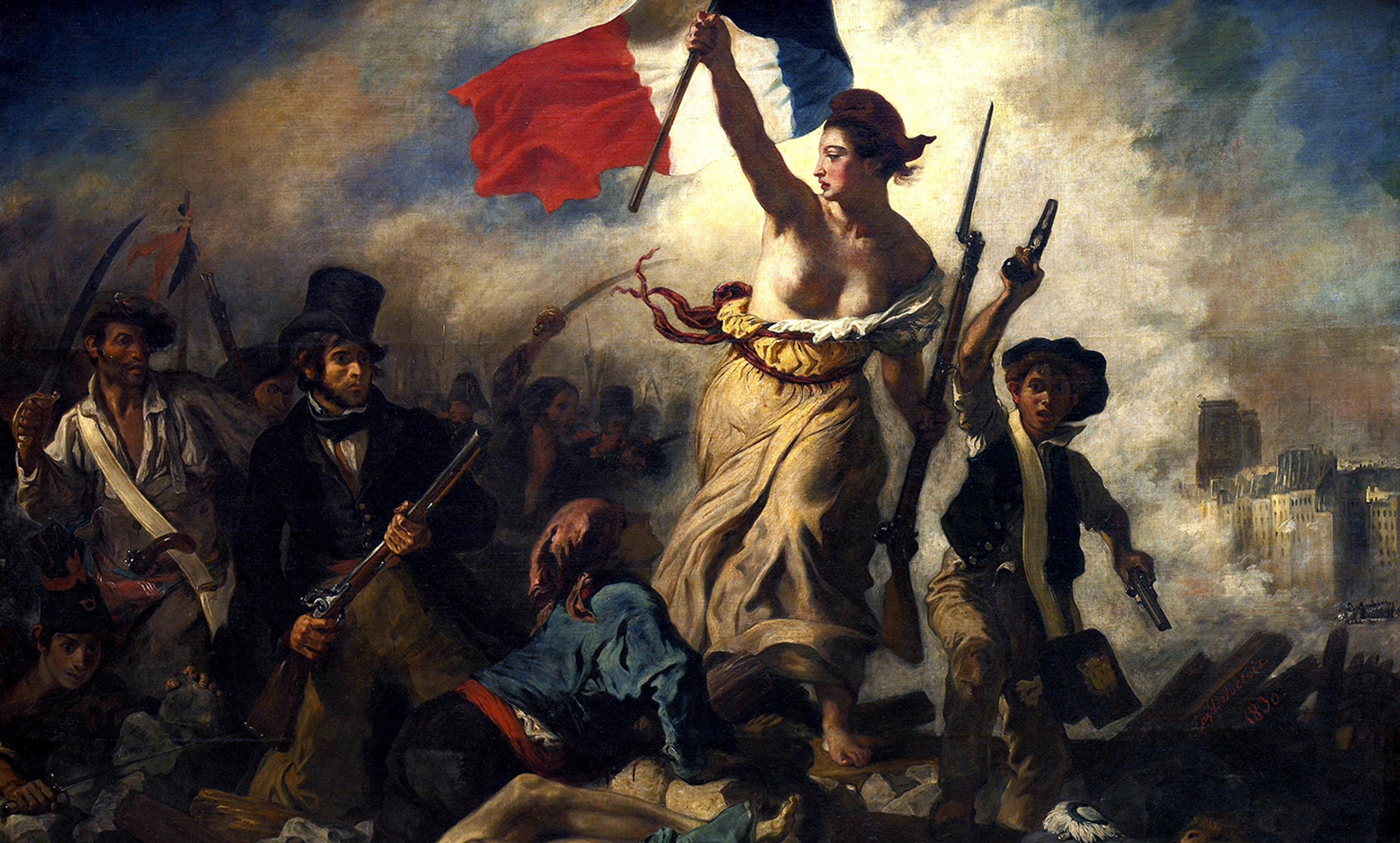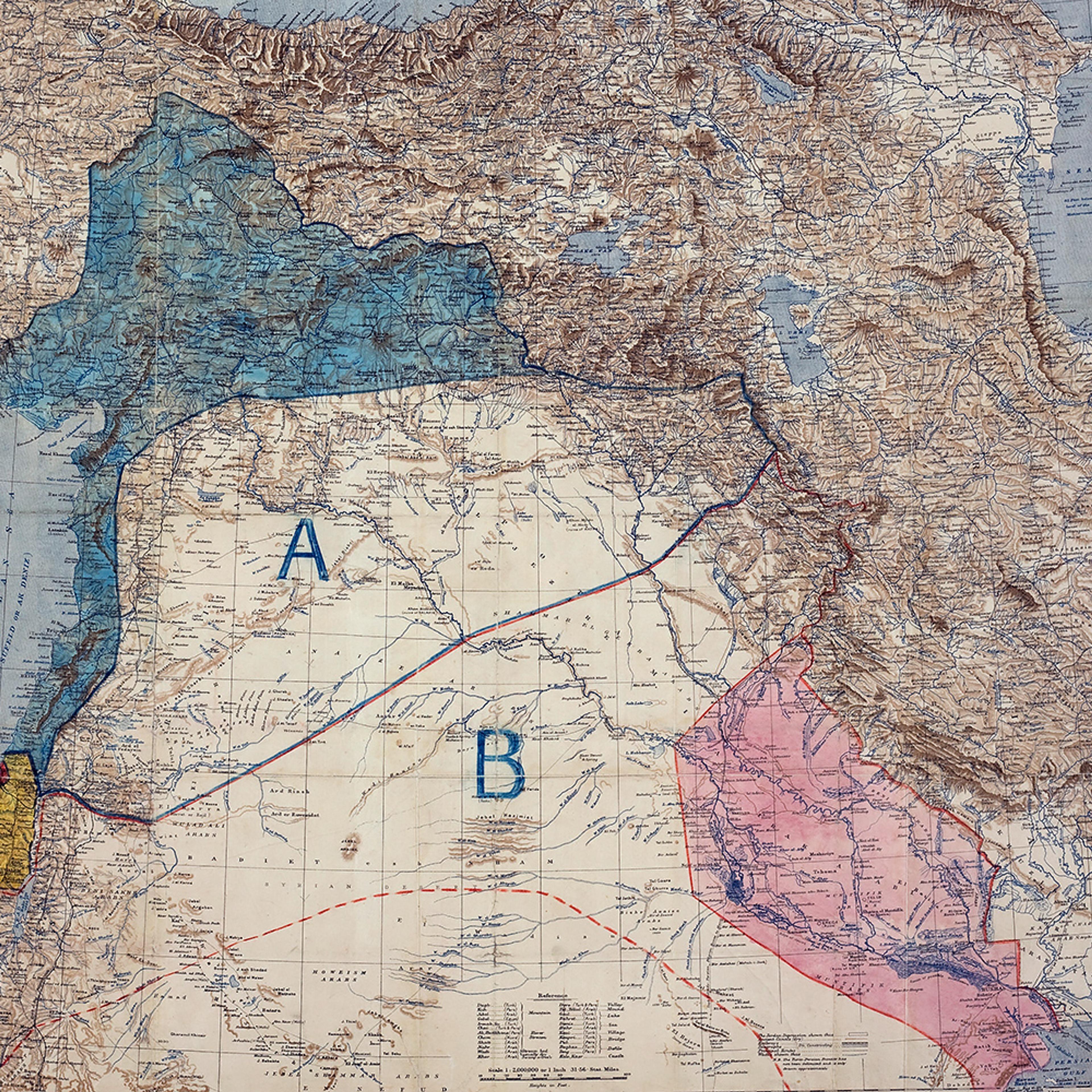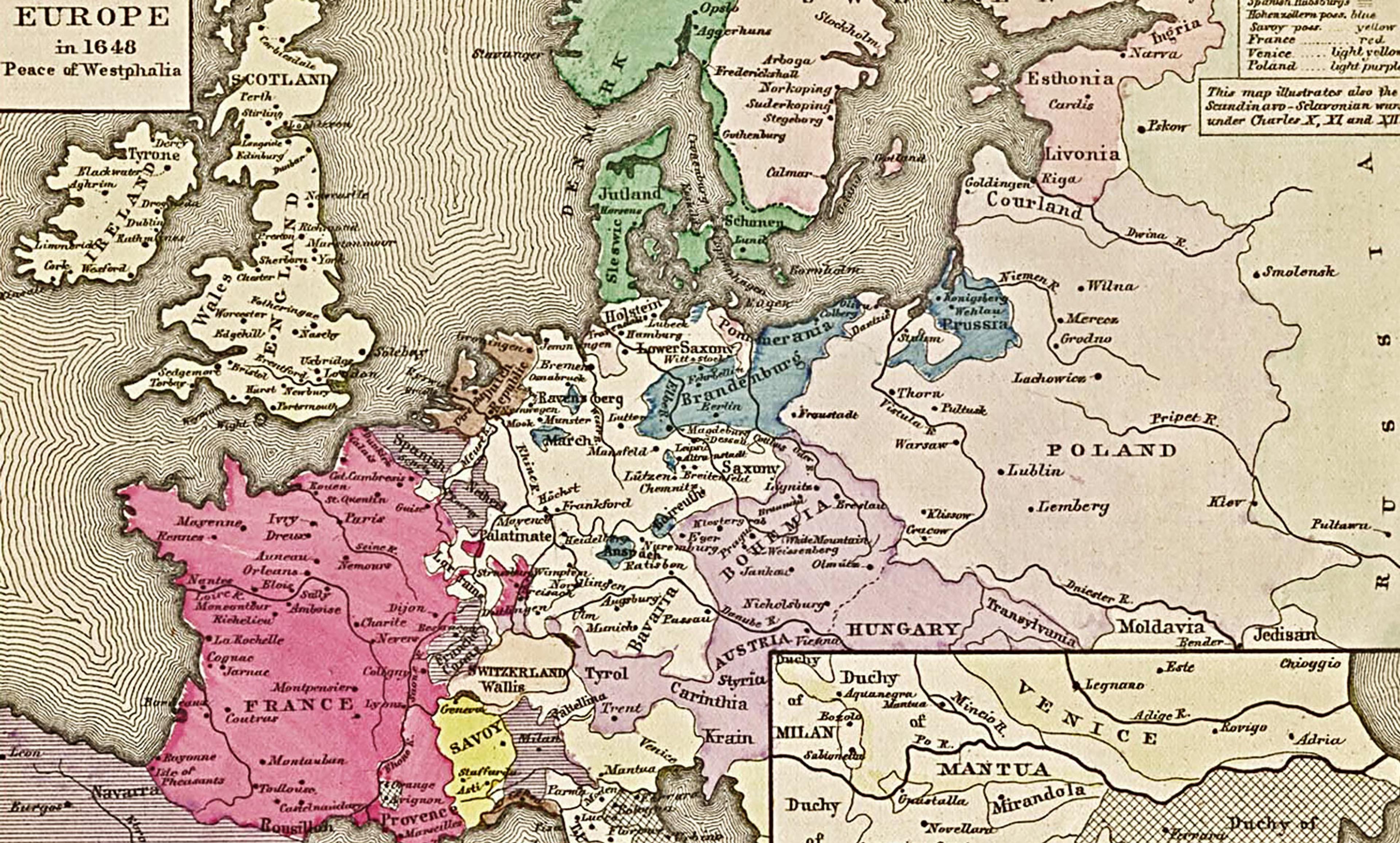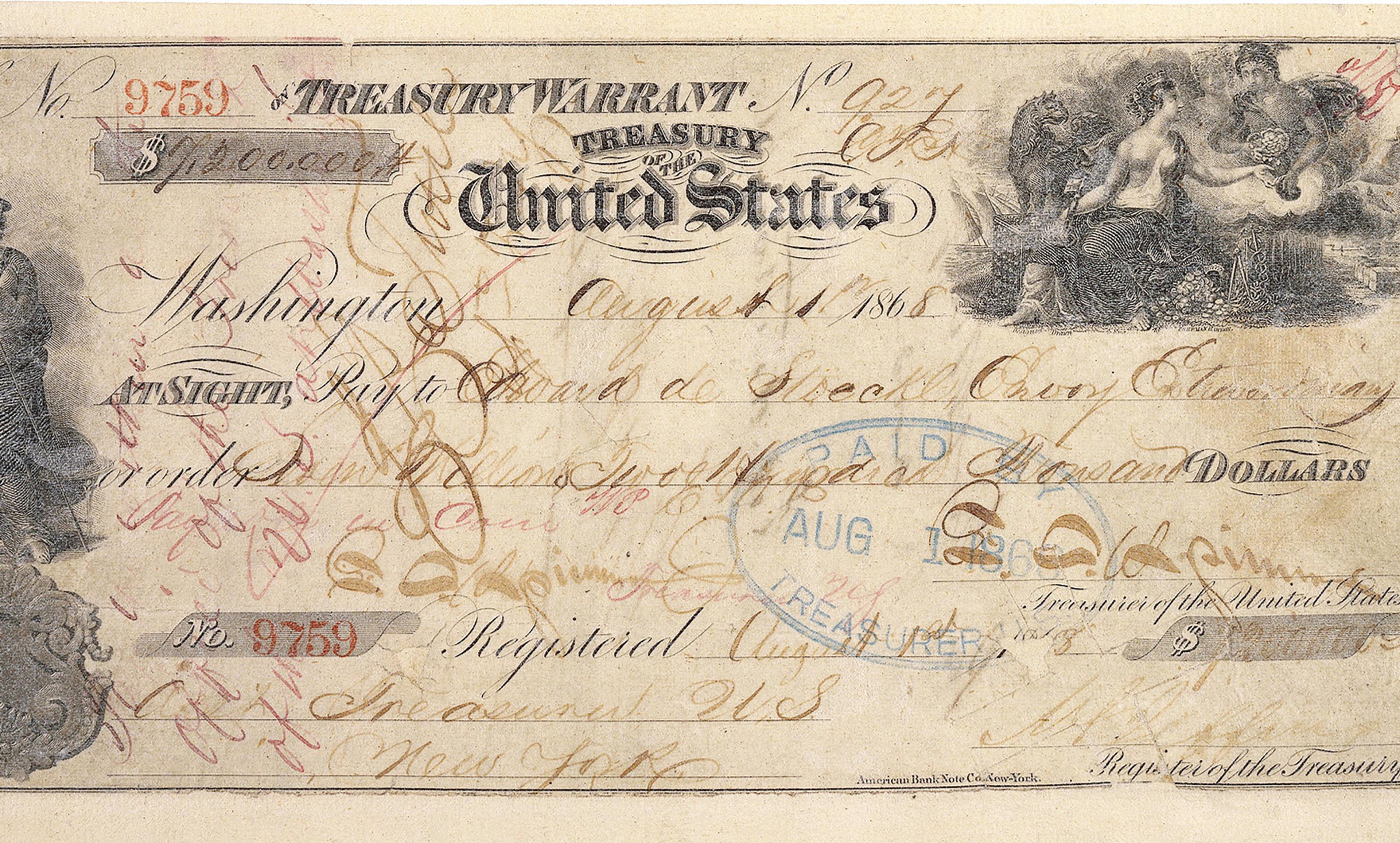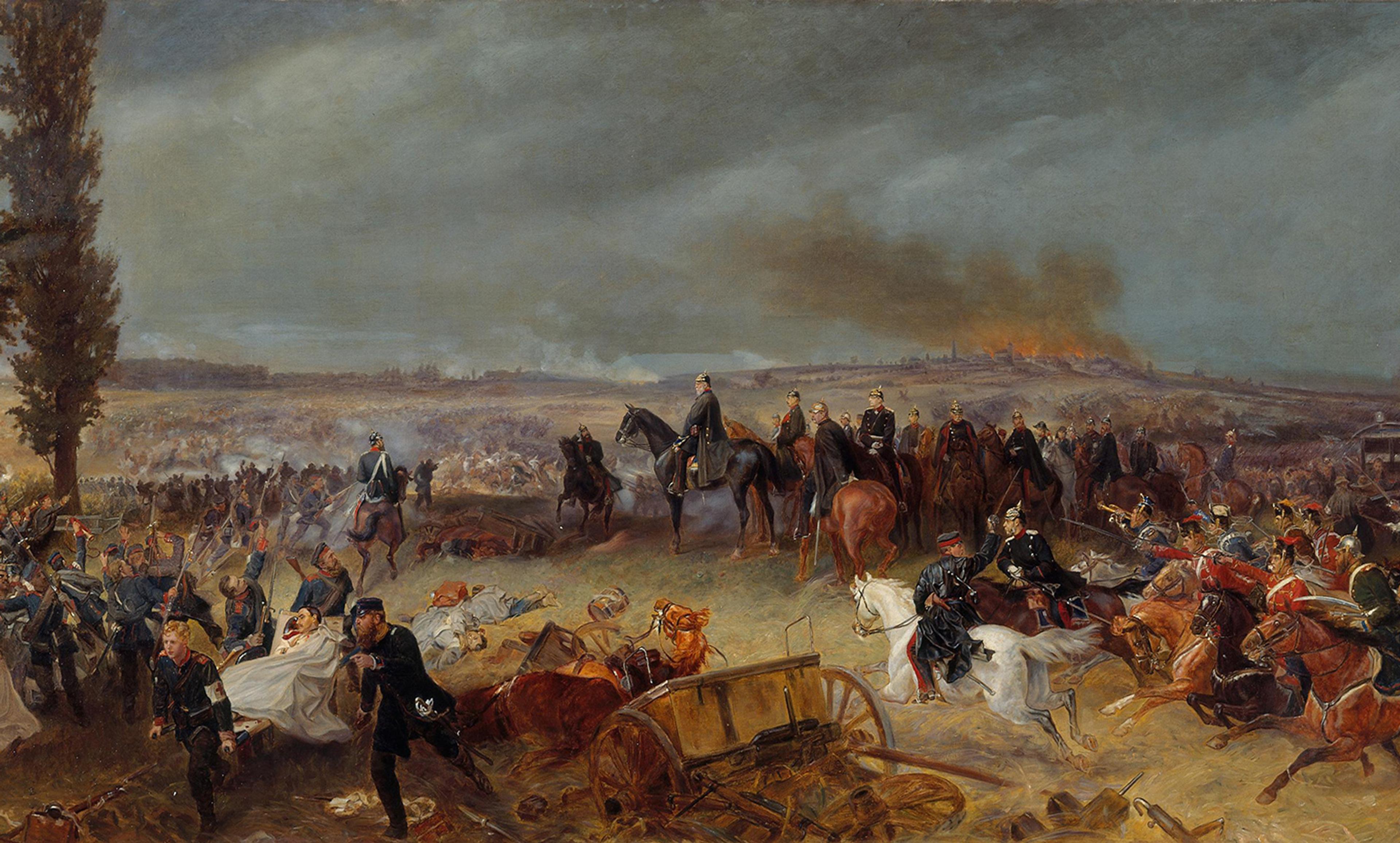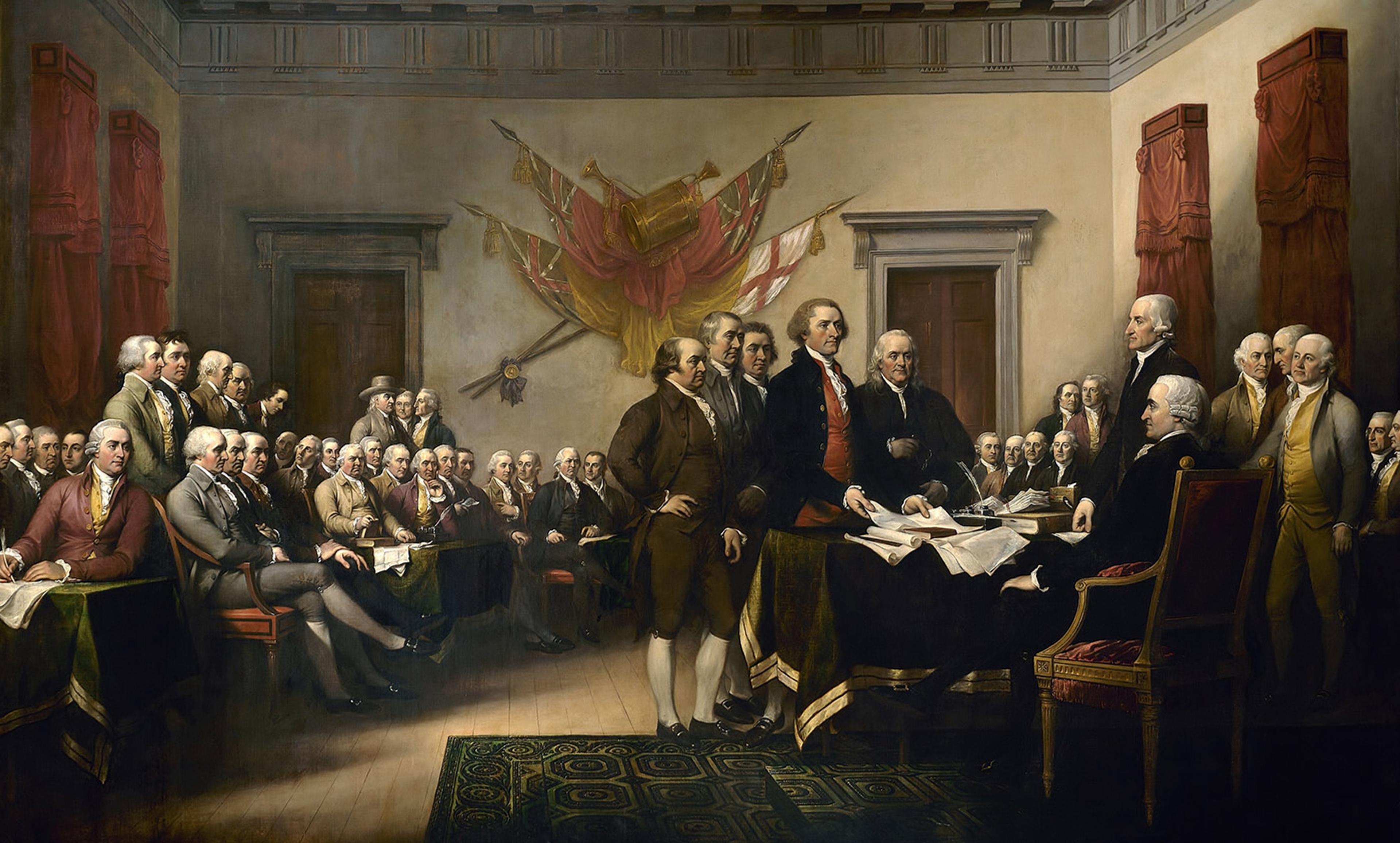La Liberté guidant le peuple (Liberty guiding the people) by Eugene Delacroix (1830). Photo courtesy Musée du Louvre/Wikipedia
By the 20th century, the idea that local peoples ought to have a say in the status of their territory came to be called national self-determination. Historians and legal scholars alike often describe this principle as triumphantly emerging from the calamity and destruction of the First World War. By these accounts, Woodrow Wilson, then president of the United States, pressed for various peoples to establish new states in eastern Europe. Since then, it was enshrined in the United Nations Charter, where one of that organisation’s defining purposes is described as ‘to develop friendly relations among nations based on respect for the principle of equal rights and self-determination of peoples’. And yet, the true history of national self-determination, as well as the controversy it can engender, stretches back to the French Revolution.
Throughout medieval and early modern Europe, rulers possessed their realms much like people now might own their house. Title existed, and could change hands, according to dynastic principles: lands were inherited by descendants, came together when royal houses married, and could even be sold. A major difference existed, nonetheless, between premodern Europe and the real-estate transactions of today – war. Success in battle also determined who controlled lands, aside from birthright.
These hereditary and military entitlements reflected the legal reality of the time. In the 18th century’s most important book on international law, the bestselling The Law of Nations (1758), Emmerich de Vattel argued that ‘just title’ to territory derived from either ‘ancient and original possessions’ or from ‘concessions, purchases, [and] conquests made in the regular war’.
Then, in 1789, women and men in France started to make an incendiary claim. They argued that the French people, not the king, ought to be the source of political authority. This position is encapsulated in Article 3 of the ‘Declaration of the Rights of Man and of the Citizen’, the French Revolution’s foundational document. In it, the French people asserted that, henceforth, ‘all sovereignty resides essentially in the nation’. The previous bearer of this authority, Louis XVI, would soon go on to lose his head as well.
The consequences of this revolution in French politics are well-known though still contentious. They represent, depending on one’s point of view, either the birth of democracy or a first step towards the dictatorship of Maximilien Robespierre and his ‘Reign of Terror’ in which thousands died. But this momentous change also had profound implications for international law.
If French revolutionaries questioned the sovereign authority of their king within their borders, they also implicitly undermined the claim of any monarch to the territory within theirs. No longer should a country be passed down as property, within a family, much less won or lost in war. Just as the people were becoming the final arbiter of political decisions within France, so too, this new logic implied, the people ought to determine the title and status of the territory where they lived. Moreover, revolutionaries postulated that only dynastic rulers ever aspired to offensive war or territorial aggrandizement, and that free peoples were naturally pacific. In May 1790, the French therefore issued a declaration of peace to the world and a renunciation of aggressive warfare and conquests. Premodern claims to territory were thus repudiated.
At first, these claims became practical problems only through diplomatic imbroglios. For example, prior to the Revolution, the French king had acquired the Mediterranean island of Corsica in a typically old-regime manner – through a treaty, which essentially represented a sale, in 1768 with the city-state of Genoa. In 1789, Corsicans asked to become formally part of France – and the new National Assembly in Paris agreed. Up until that point, much of what lawyers understood to be ‘international law’ had been the treaties that states (and, most often, the states’ dynastic rulers) negotiated between themselves. Now, however, the French were asserting that the choice of a people could trump these sorts of covenants. As one French official asserted: ‘The law of nations is not founded on the treaties of princes.’
As time went on, this new legal reality spread – next to Avignon, which was papal territory, having hosted the Papal Court in the 14th century. In 1790, the townspeople revolted against Pope Pius VI, declared independence, and proclaimed a desire to join France. At first, French officials were hesitant to accept, confrontational as it was to the Supreme Pontiff. Some people recognised, however, that if the French intended to be true to the wishes of the people, they could not pick and choose who, when and where. Robespierre declared that: ‘The cause of Avignon is that of the universe, it is that of liberty.’ Meanwhile, envoys sent from Avignon to Paris to lobby for union emphasised the legal precedents set by France’s recent actions. They argued that the National Assembly must accept the people of Avignon’s request, because: ‘this is how [it] acted in the case of Corsica’. Ultimately, the French organised plebiscites in Avignon in the summer of 1791, for the first time in history, to confirm the peoples’ true desire.
One of the beauties of the old system was that dynastic inheritance, or clear victory in war, lent a certain degree of stability to the territorial order. As one opponent of the union of Avignon and France warned: ‘Any annexation is now possible so long as one can prove or simply conjure up a supposed popular will in favour of the takeover.’ Or, as another demanded to know, if the people’s supposed choice ‘sufficed to strip a sovereign of a part of his state, why stop if on such a happy path?’ This author went on to list territories on France’s borders: ‘Savoy, Nice, the Low Countries, the Palatinate’, all of which France would annex during the Revolutionary War that broke out in 1792. Each time, revolutionaries justified the takeover as deriving, somehow, from the desire of its inhabitants.
Much like at the time of Wilson in the US, people today still invoke national self-determination to facilitate secession from an established state or empire. Just last year, people in both the Catalan region of Spain and Iraqi Kurdistan went to the polls to cast their votes in highly charged plebiscites, asking whether they wished to become independent nations. But the example from the later French Revolution – of a great power making a land-grab, using the pretext of the people’s will as a legal fig-leaf – took contemporary form when Russia seized Crimea in 2014. Thus, whether it leads to independence or annexation, national self-determination is just as provocative a principle of international law today as it was when it first emerged in revolutionary-era France.
